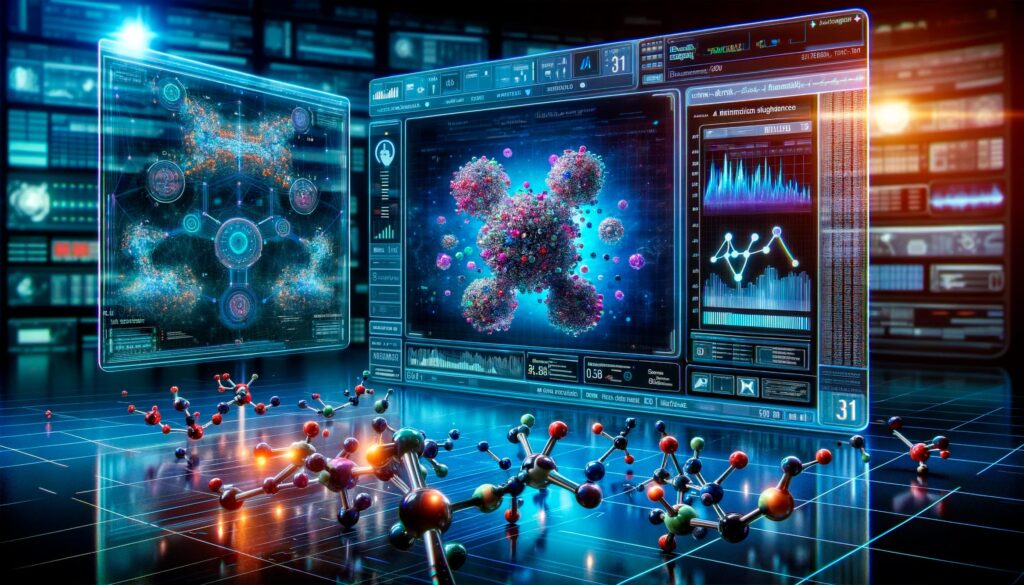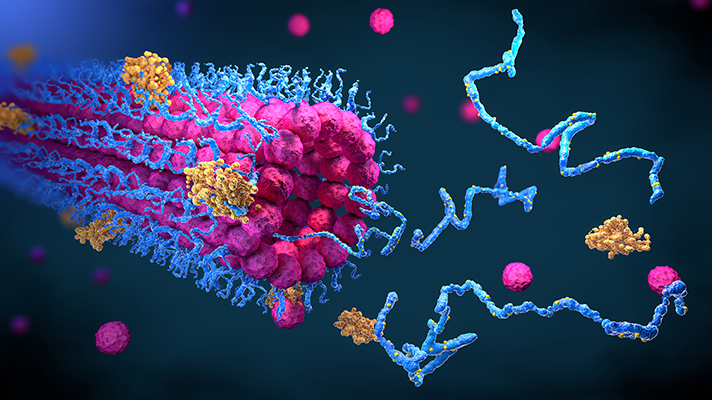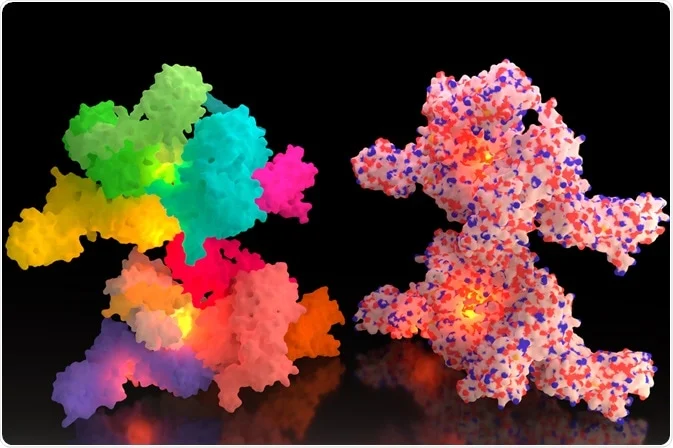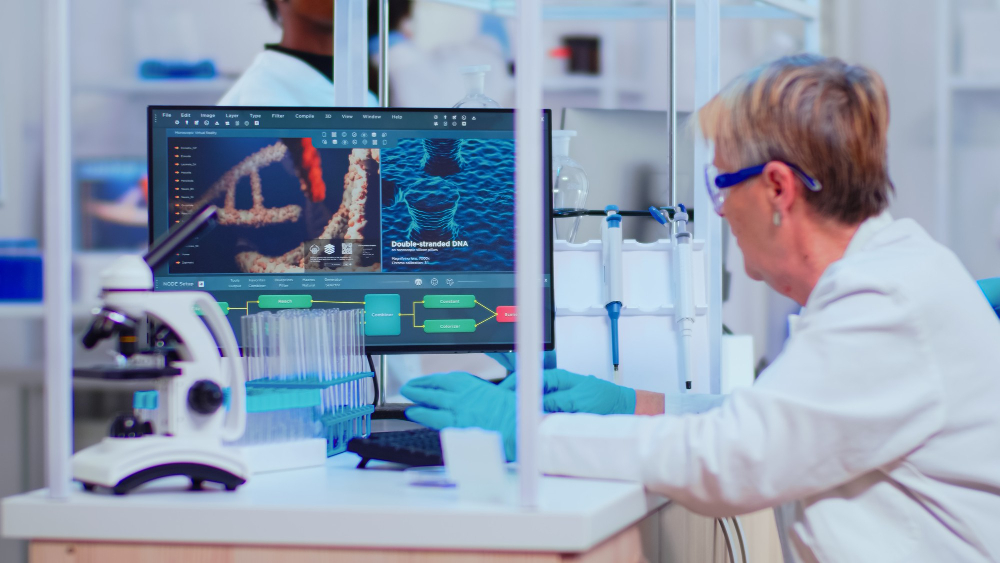Life Sciences
Life Sciences
How Generative AI Works
Generative AI models learn from vast amounts of data to understand its underlying structure. For example, a model trained on thousands of human faces can generate new, realistic-looking faces. This capability is achieved through the following components:
Generative Adversarial Networks (GANs)
GANs consist of two neural networks—a generator and a discriminator—that are trained together. The generator creates new data, while the discriminator evaluates how close the generated data is to real data. Over time, the generator becomes adept at creating data that is indistinguishable from the original data.


Variational Autoencoders (VAEs)
VAEs encode input data into a compressed latent space and then decode it back into data that closely resembles the original. By sampling from the latent space, VAEs can generate new data that shares similar characteristics with the original input.
Transformers
Originally designed for natural language processing, transformer models like GPT have proven effective in generating coherent text. These models predict the next word in a sequence, thereby generating text that follows the patterns learned during training.

Use Cases of Generative AI in Life Sciences

Drug Discovery and Design
Application Example

Molecule Generation
Generative AI models can be trained on large datasets of chemical compounds to understand the relationship between molecular structure and biological activity. Once trained, these models can generate novel molecules with desired properties, such as binding affinity to a particular protein target. For example, GANs can be used to generate new chemical entities that are structurally similar to known drugs but with potentially improved efficacy and reduced side effects.

Optimization of Lead Compounds
After identifying a promising lead compound, generative models can optimize it by exploring variations that enhance its therapeutic potential. VAEs, for instance, can explore the latent space of chemical structures to suggest modifications that could improve drug-likeness, solubility, or metabolic stability. This capability significantly reduces the time and cost associated with traditional trial-and- error methods in drug design.

Real-World Impact
Companies like Insilico Medicine have successfully used generative AI to discover new molecules that target diseases like fibrosis and cancer. These models can reduce the timeline for drug discovery from years to months, bringing potentially life-saving therapies to market faster.
Precision Medicine and Personalized Treatment
Precision medicine aims to tailor treatments to individual patients based on their genetic makeup, lifestyle, and environment. Generative AI can play a crucial role in this area by analyzing complex datasets to generate personalized treatment plans or predict patient responses to specific therapies.
Application Example
Synthetic Patient Data Generation
One of the challenges in precision medicine is the need for vast amounts of patient data to train predictive models. However, patient data is often scarce and subject to privacy concerns. Generative AI can generate synthetic patient data that mimics the statistical properties of real patient data without compromising individual privacy. This synthetic data can then be used to train models that predict patient outcomes, drug responses, or disease progression.


Personalized Treatment Protocols
Generative models can analyze a patient’s genetic data, medical history, and lifestyle factors to generate personalized treatment protocols. For instance, AI can suggest the most effective drug combinations for a cancer patient based on their unique genetic mutations. Additionally, these models can predict potential adverse reactions to certain treatments, allowing doctors to avoid ineffective or harmful therapies.
Real-World Impact
In oncology, generative AI is being used to design personalized immunotherapies that activate a patient’s immune system to target their specific cancer cells. By generating and testing different treatment regimens in silico, AI can identify the most promising approach before clinical trials, increasing the likelihood of success.

Protein Structure Prediction and Design
Application Example

Protein Folding
The process of protein folding—where a linear sequence of amino acids folds into a complex 3D structure—is fundamental to understanding diseases caused by misfolded proteins, like Alzheimer’s and Parkinson’s. Generative models, including those based on deep learning architectures, have made significant strides in predicting protein structures from amino acid sequences. For example, AlphaFold, developed by DeepMind, uses AI to predict protein structures with remarkable accuracy.
De Novo Protein Design
Generative AI can also be used to design entirely new proteins that do not exist in nature. These synthetic proteins can be tailored for specific functions, such as binding to a particular molecule or catalyzing a specific chemical reaction. This capability has significant implications for developing new therapies, such as designing enzymes that can break down toxic substances in the body or the environment.


Real-World Impact
The design of synthetic proteins using generative AI has potential applications in developing new vaccines, such as those based on protein subunits, and in creating novel enzymes for industrial biotechnology applications, like biofuel production or waste degradation.
Biomedical Image Analysis and Synthesis
Generative AI has also shown great promise in the field of biomedical imaging, where it can be used to enhance image quality, generate realistic images from limited data, or even create entirely new types of imaging modalities.
Application Example
- Image Enhancement and Reconstruction
- Synthetic Data Generation for Training Models
- Real-World Impact
Image Enhancement and Reconstruction
Generative AI can be used to improve the quality of medical images, such as MRI or CT scans, by reducing noise or increasing resolution. GANs, for example, can generate high-resolution images from low-resolution inputs, enabling better diagnosis and analysis. This capability is particularly valuable in situations where high-quality imaging data is difficult to obtain, such as in low- resource settings or when imaging small or delicate tissues.


Synthetic Data Generation for Training Models
Another significant application is the generation of synthetic biomedical images for training AI models. In many cases, acquiring large, labeled datasets of medical images is challenging due to privacy concerns and the need for expert annotation. Generative AI can create synthetic images that are realistic and diverse, providing a valuable resource for training and validating machine learning models for tasks like tumor detection or organ segmentation.
Real-World Impact
The use of generative AI in biomedical imaging is helping to democratize access to advanced diagnostic tools. For example, AI-enhanced imaging techniques can enable doctors in remote areas to make accurate diagnoses using lower-quality imaging equipment, ultimately improving patient outcomes.

Conclusion
Generative AI is a transformative technology that is reshaping the life sciences. By enabling the generation of new data, be it molecules, proteins, patient profiles, or images, these models are accelerating research and development, personalizing medicine, and enhancing diagnostic capabilities. As the technology continues to evolve, we can expect to see even more innovative applications that will push the boundaries of what is possible in the life sciences. The potential for Generative AI to drive breakthroughs in healthcare and medicine is immense, promising to improve the quality of life for people worldwide.
Strategic
Partners








We will contact
Get a call back
Accordion Widget for Elementor allows you to present plenty of content in a foldable and concise way.
Accordion Widget for Elementor allows you to present plenty of content in a foldable and concise way.
Accordion Widget for Elementor allows you to present plenty of content in a foldable and concise way.
Accordion Widget for Elementor allows you to present plenty of content in a foldable and concise way.
Accordion Widget for Elementor allows you to present plenty of content in a foldable and concise way.

